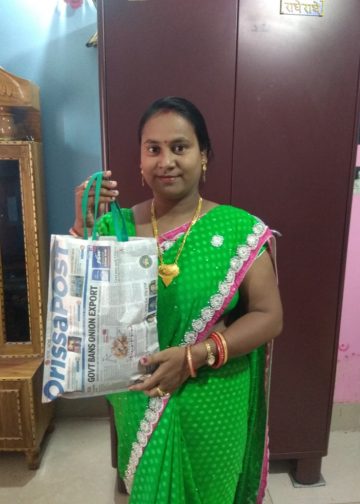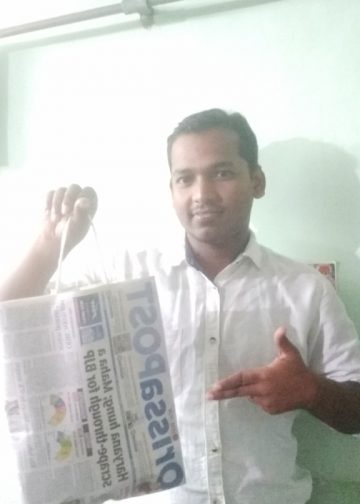Some years ago an NGO was asked by the state government to run a gaushala in Patiala. They did, on condition that the food would be supplied to the cows by the municipality. The municipality gave the contract for chara (green fodder) to a person. He bought it from farmers and gave it to the gaushala. One day, after eating the chara, 18 cows died within an hour. Instead of holding an enquiry and seeing what was wrong with the chara, the municipal commissioner buckled under the pressure of “gausevaks” and arrested the NGO caretakers of the gaushala. The “gausevaks” seized the gaushala and began to run it. Another 40 cows died and then the gaushala was closed down. A typically Indian way of solving a problem. Not one person in the municipality held the farmers, or the chara contractor, responsible for giving poisoned feed to the cows.
I would have done an enquiry into two things: The pesticides that were being used to grow the feed and the aflatoxin contamination of the crop.
The Food Safety and Standards Authority of India (FSSAI) has done a detailed survey of milk across India and released the results in October 2019. They found that a large amount of milk had aflatoxins, dangerous carcinogens, in it, far beyond the permissible limit. The highest rates of aflatoxin contamination were found in Tamil Nadu, Delhi and Kerala.
Aflatoxins are 20 toxins produced by mould (fungi) of the genus Aspergillus, namely, A. flavus, A. parasiticus and A. nomius. Aflatoxin B1 is the most predominant form in aflatoxin-contaminated crops. When cows, buffaloes, sheep, goats eat feed contaminated with aflatoxins B1 and B2, aflatoxins M1 and M2 will be formed in their livers and excreted in milk. This is drunk by you.
Aflatoxins cause both acute and chronic toxicity. Aflatoxins B1 and M1 are the most potent and can cause acute liver damage, cirrhosis and cancer. They have been classified as carcinogens by the International Agency for Research on Cancer (IARC).
Aflatoxins-producing moulds affect crops in warmer parts of the world. Peanuts, maize and cottonseeds are most frequently incriminated, but it is also found in wheat, cassava, oilseeds, fruits, wines and legumes. The moulds (Aspergillus flavus and Aspergillus parasiticus) grow in soil, decaying vegetation, hay, and grains. The optimal growth temperature is 25C, but already at 10-12C the fungus starts to grow.
Droughts make the crops even more susceptible to Aspergillus infection. But it can occur at any time: After the crops are harvested, contamination can occur during storage when there is delayed drying, or when the moisture level is high.
Rodents and insects in the silos facilitate mould infestations. Aflatoxin contamination can occur along the entire food chain, starting from the field, during storage, and transportation and processing.
Animals fed contaminated food pass aflatoxins into eggs, milk and meat. Milk is the most important source of aflatoxins in the human food chain, containing both M1 and B1. Once the aflatoxins are in the milk they cannot be removed by boiling, pressure cooking or pasteurisation.
Cancer is not the only problem. Food containing aflatoxin concentrations, of just one milligram per kilogram, can cause aflatoxicosis which causes nausea, vomiting, abdominal pain and convulsions in the short term and acute liver failure, jaundice, lethargy, eventually leading to death, according to a WHO study in February 2018. “Based on past outbreaks, it has been estimated that when consumed over a period of 1–3 weeks, an Aflatoxin B1 dose of 20–120 microgram per kilogram (μg/kg) by weight per day is acutely toxic and potentially lethal,” the study says.
And that’s not all. A study, conducted in Nairobi, Kenya in August 2018, stated that aflatoxin contamination had severe health impacts on milk drinkers, causing stunting in children under the age of five. “The exposure to AFM1 from milk is 46 nanogram per kilogram (ng/day) on average, but children bear higher exposure of 3.5 ng/kg bodyweight per day (bw/day) compared to adults, at 0.8 ng/kg bw/day. This causes stunting among children,” the study said.
According to FSSAI standards, the permissible limit of aflatoxins in milk is 0.5 µg/kg. The FSSAI survey showed that about 10 per cent of the milk samples were contaminated. Imagine 10 per cent of India’s population, that drinks milk, taking this poison in daily. 38 per cent of Lakhs of children are now stunted according to government figures.
Aflatoxins are also mutagenic. Which means they damage our DNA, cause it to mutate and set into motion a problem that will affect all the coming generations of the family.
They are even more dangerous for animals, who die immediately after convulsing or develop cancer. The first aflatoxins were discovered in England in 1961 when 100,000 turkeys died suddenly. Contaminated peanut meal feed was found to be the source of the outbreak.
What should we be teaching farmers? To store grains properly so there is no mould growth. To check their fields to see that there is no mould growth. Do we do this? No. The presence of aflatoxin M1 (AFM1), in milk and dairy products throughout the world, has been known for over thirty years and is a special problem in India. But no attempt has been made to deal with it.
Do we care what we feed our cows and buffaloes? No – as long as the quantity is there, who cares about the quality. Feed and fodder are not regulated in India. While 60 countries, including India, have put a maximum level of 0.05 μg/kg milk and the EU has put the same level for feed that is given to dairy cattle, India has no laws for fodder
A system should be in place to check fodder, and this should be made mandatory for dairy milk producers. Milk should be tested daily, instead of once in ten years, by FSSAI. Rapid screening of fresh, stored, pasteurised milk, liquid or powdered milk, cheese, needs the ELISA, TLC or HPLC test. If an alert has been signalled, the farmer must withdraw the products and suspend delivering milk to the market.
Poor storage conditions and practices can also lead to fungal contamination. The most effective method to control AFM1 concentration in milk is by applying standard Good Agricultural and Storage Practices during pre- and post-harvest conditions. Strict regulations, and adapting good storage practices in developed countries, have minimised the contamination of AFM1 in milk and dairy products. Because AFB1 contamination levels vary with year and climate, it may be useful to develop an AFB1 monitoring programme that takes into account climatic conditions, and pre-harvest feed quality, during its growing season. There is an urgent need to control aflatoxins, especially in urban and peri urban areas where cattle are stall fed.
Most farmers know nothing about aflatoxins and, certainly, no dairy owners know that milk can be contaminated. You, as the consumer, know the least of all. A national awareness programme is important.
Since it the main nutrient for babies and young children, the occurrence of AFM1 in commercially available milk, and milk products, is a serious health problem. Don’t give your children milk. Stop bringing it into the house.
–To join the animal welfare movement, contact gandhim@nic.in, www.peopleforanimalsindia.org.






































